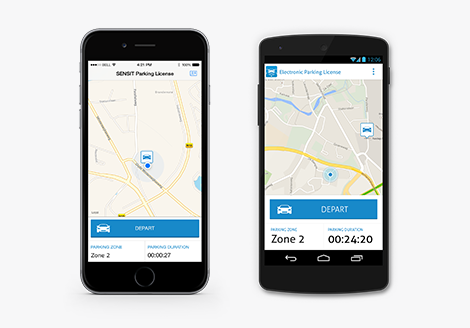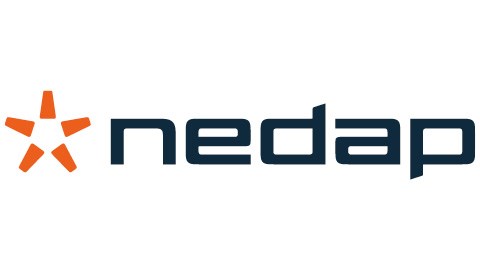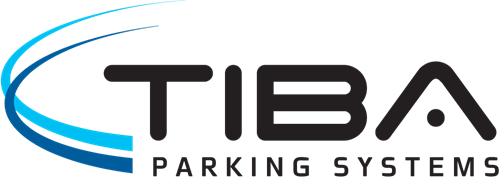
It is the most frustrating part of driving in a city: trying to find a parking space. Especially mobility impaired people are using on-street parking spaces intensively. Because of their physical condition, they require a parking space close to their destination. Specifically for this user group, Nedap offers the SENSIT Parking License. With this service disabled drivers can easily be guided to free spaces and designated parking spaces can be utilized effectively.
About 30% of all motorists in cities is searching for a parking spot. However: new and clever technology is available to make these parking spaces easily findable. This results in less congestion, reduction of emissions and safer streets and thus a more attractive city for visitors and citizens, including mobility impaired people.
The SENSIT Parking License
The SENSIT Parking License detects whether or not a single parking bay designated for disabled is legitimately used. The application works simple: as soon as the disabled driver parks, the location of the parking license is linked to the parking bay. By monitoring the real-time usage of designated bays, these parking spaces can be effectively enforced and disabled drivers can be guided efficiently. When a parking space is occupied by a car and the required parking license is not detected, the parking officer will be alerted and can be directed to the specific parking space for verification. Additionally, the Smartphone application guides drivers to free parking spaces. It offers fast and easy activation of a parking session. Furthermore, the application can be used as a car finding assistant to keep track of where the car is parked. Additionally, an in-car device is available for non-smartphone users.
The SENSIT Parking License offers:
Comfortable parking
- Real-time overview of available spaces
- Easy (de)activation of parking sessions
- Car finding assistance feature
- Available for both smartphone and non-smartphone users
Effective parking management
- Improved enforcement by monitoring usage of single designated parking spaces
- Reduction of fraud in use of designated parking spaces
- Effective use of all existing and new designated parking spaces for mobility impaired people
Cost savings
- Cost efficient and easy distribution of parking licenses: a license can be applied and issued online.
- Increasing revenues by more effective and efficient parking enforcement
- Easy to integrate with existing parking license systems
In cities the majority of parking spaces is found on-street. Surprisingly hardly any data on usage of these spaces is available. This is changing rapidly. Many cities and governments, in partnership with the industry, are currently developing and implementing programs to create smarter cities. Parking data from on-street sensors are considered a prominent part of that. With information from parking sensors it is easy to guide motorists, including mobility impaired people, quickly to available parking spaces.
SENSIT: real-time parking data
The Parking License is part of Nedap’s SENSIT system. SENSIT vehicle detection technology consists of wireless parking sensors which detect in real-time whether or not a single parking bay is occupied and how long it has been occupied. The parking sensor system is robust and especially designed for parking in challenging on-street environments.
Bay-mounted sensors detect in real-time whether or not a single parking bay is occupied and how long it has been occupied. When parking spaces are easy to find, search traffic reduces. This results in:
- Less traffic congestion
- Reduction of CO2 emissions
- Better use of parking capacity
- Increasing revenues from parking
- Users experience parking as a service
SENSIT offers real-time monitoring of the usage of individual parking spaces, such as designated bays for persons with disabilities. The SENSIT Parking License application identifies the parking spot in which the car is parked. When the car parks, the in-ground mounted sensor detects vehicle presence and generates a time stamp. With activating the app, GPS coordinates are transmitted to the SENSIT application. The parking bays status and GPS coordinates are matched by advanced algorithms and the status is linked to the spot where the car is parked. Beside the app for smartphones for Android and IOS platforms, the SENSIT Parking License is also available as an in-vehicle device. It is a small device that automatically contacts the SENSIT network when the car parks, to register that the vehicle has parked in the designated bay. This makes it a complete solution that is also available for non-smartphone users.
When a parking space is occupied by a vehicle but the required parking license is not detected, the SENSIT system can alert a parking officer digitally. He or she will be directed to the specific parking space for verification (and optionally issue a fine). Thus, the SENSIT Parking License allows digital monitoring of the legitimate and real-time use of parking bays for disabled people only. Which makes the solution of big value for efficient enforcement of designated parking spaces.
SENSIT offers open data about the real-time parking status of individual spaces: occupied and available. the SENSIT Parking License functionality is easy to integrate into third party parking system for mobile devices, such as pay by phone and way finding apps. This can be easily integrated thanks to the automatic license matching functionality which is available through the open software interface of the SENSIT system.
How SENSIT works
Nedap’s parking sensor technology consists of wireless in ground sensors, a communication network and a software application.
Wireless sensors
Every time a vehicle parks in a parking bay, an event with time stamps is generated. The sensor not only measures whether or not a car is parked in that specific parking bay, also the duration of the stay is monitored. The sensor is completely wireless and battery powered. Two types of sensor technologies are used: magnetic and infrared. This dual technology approach ensures reliable and accurate measuring. Smart algorithms inside the sensor are used to decide what sensor technology should be used.
Communication network
SENSIT uses the networking protocol that was specifically developed for this application contains self-configuring and self-healing elements. The sensors in the ground constantly communicate with each other and, preferable, with relay nodes that are within reach. These nodes are battery powered, thus no cabling is needed. The relay nodes are used to offer alternative communication paths when the car park is covered in metal from all the cars that are parked there. It also limits the number of hops used for communication, which makes the system fast and reliable. The communication network is bidirectional. Packages are numbered so they can be retrieved when they are lost. Performing firmware updates inside the sensors is possible by using the wireless network. The data collector allows bidirectional network communication. A queuing mechanism ensures the network to remain operational, even in case of power failure. Upgrades of sensors or communication network can be realized centrally and every time of the day.
Hosted integration software
The data collector transmits the parking status data to a web-based software. This application can be used to configure, monitor and analyze the parking occupancy data. The SENSIT integration software allows flexible, scalable and easy integration with third party systems using SOAP and REST. The software user interface is developed to ensure fast deployment and easy setup of large scale sensor networks. The performance dashboard uses ‘widgets’ to inform system administrators in one single overview about the status of all components in the wireless sensor network. This feature greatly reduces the time and energy needed to administer and manage the system.
The dashboard is designed to give the user an overview on how the SENSIT system is performing. The dashboard itself contains several widgets. A widget summarizes and displays the actual state of SENSIT system. The dashboard contains six main widget categories: sensors, relay nodes, data collectors, network, server and system notifications. The functions of the dashboard are self-explaining by hover over pop-ups and help balloons when needed. Every widget can be configured via the configuration symbol at the right corner of every widget, see figure below. The configuration symbol will automatically show if you move your mouse to the specific widget. In this screen you can change the different widget settings.
About Nedap Identification Systems
Nedap Identification Systems is the leading specialist in systems for long-range identification, wireless vehicle detection and city access control. Our readers, sensors and controllers optimize, monitor and control the movement of vehicles and people. Safe, secure and efficient. Technology that can easily be applied to security, traffic and parking applications. Cities, airports, seaports and industrial estates all are expected to be smart about mobility. Nedap enables citizens to keep moving around in a secure and convenient fashion.
Nedap Identification Systems is part of Nedap N.V., headquartered in the Netherlands. Nedap designs and develops intelligent, sustainable technological solutions for themes that are relevant to the modern society. It is Nedap’s ambition to offer ”Technology that Matters”. Nedap Identification Systems has offices in the United States, Italy, Dubai and Singapore. Its skilled business partner network is spread across the globe.




